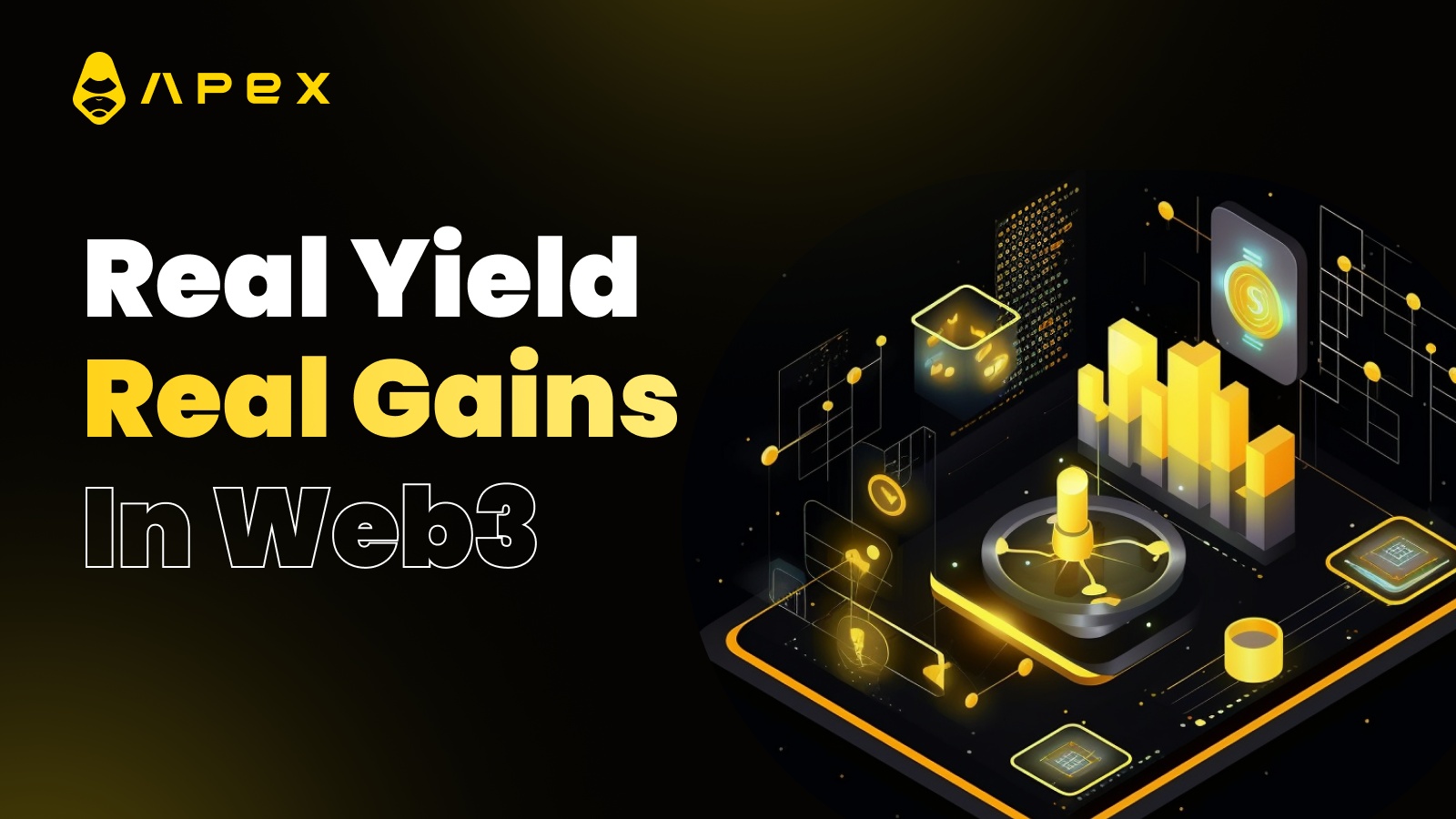You might have caught a glimpse of a new buzzword going around in recent months — real yield. We were first introduced to the concept of yield generation at the explosive peak of DeFi summer back in 2020, when yield-farming emerged into the spotlight, offering skyrocketing gains.
Fast forward two years later, discussions on yield and yield-farming continue to evolve. A key point raised has always been the multiplied gains as compared to typical interest rates we see with traditional saving strategies with banks. Without having to take a close look, most of us would see double-digit averages for the annual percentage yield (APY) or annual percentage rate (APR), just to stake selected tokens within provided pools.
However, as critics and skeptics have pointed out, exponentially-high yields of up to a whopping 1,000% at some point in the last two years, are not as they seem. A majority of these yield numbers are a result of token emissions rather than any sustainable factors, leading to large fluctuations in the value of the affected token within a short period of time as the yield-farming program lasts.
So how do we measure the yield of yield-generating offerings such as staking or liquidity programs if not by on-the-surface APY or APR?
Enter "Real Yield", the newest yield metric that focuses on the project's revenue and tokens' sustainability, together with overall utility.
The Real Deal: Real Yield
In a gist, yield only counts if it is generated when a project is making revenue. For example, Project A distributes 100,000 tokens (allocated from its treasury and overall token supply) to its program participants, and each token is valued at $1 each. Over the course of an epoch lasting a month, the project has earned $200,000 in revenue, meaning that it's $100,000 in the green after token emissions.
We can loosely think of real yield as total revenue excluding token emissions. The underlying logic is that yield rates cannot be sustained if the project is constantly in the red and has to deplete its treasury to distribute tokens to its users, while keeping the yield rate high.
Of course, this simplified equation assumes that there are negligible, actual operational costs, but the key takeaway is that real yield should not be heavily reliant on dilutionary tactics with token emissions. Real yield indicates the overarching health of the project's operations, and therefore, the trustworthiness of the project and its offerings.
Benefits of the Real Yield Narrative
Now that you're up to speed on real yield, does real yield make any difference for most retail users when in comparison to regular APY and APR numbers reflected as a result of token emissions? There are plenty of other factors at play when considering yield, such as project phases and development roadmap, and other key decision-making reasons that would cause a shift in yield distribution models.
Established decentralized exchanges (DEXs) such as GMX, dYdX and Synthetix are some to offer real yield on their various reward models so far, comprising a mix of native and escrowed tokens. ApeX Pro, too, offers real yield on its staking and trading programs, where distributed rewards originate from a hybrid of token emissions and actual transaction fees generated on the platform, ensuring that yield-generation for users is 100% sustainable in the long run.
There's no argument that the real yield narrative is driving the rebuilding of trust within DeFi and web3 initiatives, which have been consistently plagued by scams, rug pulls and threats of vulnerabilities. And as a morphing nascent industry, reputation and trust-building exercises are critical in contributing to its longevity and relevance in the crypto-sphere. Real yield in this case serves as an instrument to restore user faith in the promises of DeFi gains, and also to guide both projects and users into implementing and being a part of more sustainable tokenomics and marketing strategies respectively.

